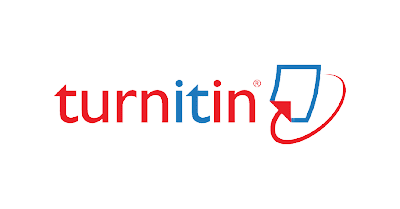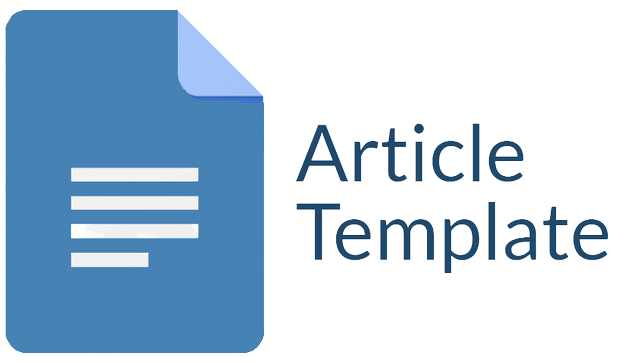IMPLEMENTASI METODE DESIGN THINKING PADA PERANCANGAN USER EXPERIENCE APLIKASI PENANGANAN GANGGUAN KECEMASAN
Abstract
Anxiety disorder is one of the mental health disorders that are still a challenge in Indonesian society. College students is one of the most vulnerable populations affected by anxiety disorders. Through questionnaires distributed to UII students, it was found that anxiety often arises when they face various problems This anxiety disorder causes several symptoms for students, both physical and psychological symptoms. This makes it difficult for sufferers to carry out daily activities normally. The implementation of a healthy lifestyle is one of the ways that individuals with anxiety disorders can use to reduce the onset of anxiety symptoms. Therefore, this study aims to design an application user experience that can help overcome anxiety disorders through the application of a healthy lifestyle. This research uses a design thinking method to ensure that the application designed has functionality that is in accordance with user problems and needs. To test the user experience of the application, usability testing is carried out by measuring three aspects, namely efficiency, effectiveness, and user satisfaction. The results of this measurement show that the application has a success rate value of 90% in the aspect of effectiveness, a time-based efficiency value of 0.0834 goals / sec in the aspect of efficiency, and gets a grade scale of "A" and the category "excellent" in the aspect of user satisfaction.
Downloads
References
adaa.org. (n.d.). Tips and Strategies to Manage Anxiety and Stress. http://www.adaa.org/
Alda, M. (2023). Pengembangan Aplikasi Pengolahan Data Siswa Berbasis Android Menggunakan Metode Prototyping. Jurnal Manajemen Informatika (JAMIKA), 13(1), 11–23. https://doi.org/10.34010/jamika.v13i1.8216
Audina, S. T., Narulita, S., & Manurung, S. (2020). the Correlation Between Anxiety Level and Sleep Quality of Final Regular Students At Binawan University Jakarta. 2, 341–346.
Dhinata, K., & Lumbuun, N. (2021). Prevalensi Faktor Risiko Ansietas Di Mahasiswa Fakultas Kedokteran (Fk). Researchgate.Net, December. https://doi.org/10.13140/RG.2.2.16551.88480
Haikal, M. (2022). Terapi kognitif perilaku untuk mengurangi gejala kecemasan. Procedia : Studi Kasus Dan Intervensi Psikologi, 10(2), 47–52. https://doi.org/10.22219/procedia.v10i2.19215
Hasibuan, S. M., & Riyandi, T. R. (2019). Pengaruh Tingkat Gejala Kecemasan terhadap Indeks Prestasi Akademik pada Mahasiswa Angkatan 2016 Fakultas Kedokteran Universitas Muhammadiyah Sumatera Utara. Jurnal Biomedik (JBM), 11(3), 137–143.
Jamilah, Y. S., & Padmasari, A. C. (2022). Perancangan User Interface Dan User Experience Aplikasi Say.Co. Jurnal Desain Komunikasi Visual, 9(2), 73–78. https://ojs.unm.ac.id/tanra/article/view/29458
Lutfi, L., & Sukoco, I. (2019). Organum: Jurnal Saintifik Manajemen dan Akuntansi. Organum Jurnal Saintifik Manajemen Dan Akuntansi, 02(01), 1–11. https://doi.org/10.35138/organu
Muhammad, F. A., Kharisma, A. P., & Sianturi, R. S. (2022). Perancangan User Experience Aplikasi Konsultasi Kesehatan Mental Online di Masa Pandemi berbasis Mobile menggunakan Metode Design Thinking. Jurnal Pengembangan Teknologi Informasi Dan Ilmu Komputer, 6(7), 3111–3121. http://j-ptiik.ub.ac.id
Novianti, A. (2022). Literature Review : Analisis Metodologi Dan Bidang Penerapan Dalam Perancangan Aplikasi Mobile. April, 1–6.
Pratiwi, A. (2020). Implementasi Metode Pendekatan Design Thinking dalam Pembuatan Aplikasi Happy Class Di Kampus UPI Cibiru.
Rokhmawati, R. I., Widiyanto, A., & Rachmadi, A. (2023). Awareness dan Metode Design Thinking di SMKN 2 Malang. 10(08), 17–26.
Rustam, M. Z. A., & Nurlela, L. (2021). Gangguan Kecemasan dengan Menggunakan Self Reporting Questionaire (SRQ-29) di Kota Surabaya. Jurnal Kesehatan Masyarakat Mulawarman (JKMM), 3(1), 39. https://doi.org/10.30872/jkmm.v3i1.5752
Sakti, R. Y. (2023). PERANCANGAN APLIKASI BERGERAK MECHA PADA BIDANG OTOMOTIF DENGAN METODE DESIGN THINKING. Edusaintek: Jurnal Pendidikan, Sains Dan Teknologi, 10(3), 1199–1211.
Salim, M. F., & Choirunnah, L. (2021). Perancangan Aplikasi Mobile Kesehatan Mental DayJournal. 11(2009), 79–80. http://etd.repository.ugm.ac.id/penelitian/detail/199932
Setiawansyah, S., Adrian, Q. J., & Devija, R. N. (2021). Penerapan Sistem Informasi Administrasi Perpustakaan Menggunakan Model Desain User Experience. Jurnal Manajemen Informatika (JAMIKA), 11(1), 24–36. https://doi.org/10.34010/jamika.v11i1.3710
Syabana, R. I., Saputra, P. Y., & Anugrah, N. (2020). Penerapan Metode Design Thinking Pada Perancangan User Interface. E-Conversion - Proposal for a Cluster of Excellence, 40–60. http://jurnalti.polinema.ac.id/index.php/SIAP/article/view/719
Wisnu, G., Bagaskara, C., Voutama, A., & Ridha, A. A. (2023). Perancangan Tampilan Antarmuka Aplikasi Self-Care Berbasis Mobile Untuk Mengatasi Kesehatan Mental Dengan Metode Design Thinking. Information Management for Educators and Professionals, 7(2), 124–133.
Wulandari, K., & Voutama, A. (2023). Perancangan UI Aplikasi Konsultasi Kesehatan Mental Berbasis Mobile Menggunakan Metode User Centered Design (UCD). Jurnal Teknologi Sistem Informasi Dan Sistem Komputer TGD, 6, 445–451.
Copyright (c) 2024 Rima Shanda

This work is licensed under a Creative Commons Attribution-ShareAlike 4.0 International License.
Jurnal allows anyone to compose, correct, and do derivative works, even for commercial purposes, as long as they credit for the original work. This license is the freest. It is recommended for maximum distribution and use of licensed material.
The submitted paper is assumed not to contain any proprietary materials that are not protected by patent rights or patent applications; The responsibility for technical content and protection of proprietary materials rests with the authors and their organizations and not the responsibility of journal or its editorial staff. The primary (first/appropriate) author is responsible for ensuring that the article has been viewed and approved by all other authors. The author's responsibility is to obtain all necessary copyright waivers to use any copyrighted material in the manuscript before submission.
Jurnal Pendidikan, Sains dan Teknologi allows the author(s) to hold the copyright without restrictions and allow the author(s) to retain publishing rights without restrictions. Jurnal Pendidikan, Sains dan Teknologi CC-BY-SA or an equivalent license as the optimal license for the publication, distribution, use, and reuse of scholarly work. Jurnal Pendidikan, Sains dan Teknologi allows the author(s) to hold the copyright without restrictions and allow the author(s) to retain publishing rights without restrictions. Jurnal Pendidikan, Sains dan Teknologi CC-BY-SA or an equivalent license as the optimal license for the publication, distribution, use, and reuse of scholarly work.
In developing strategy and setting priorities Jurnal Pendidikan, Sains dan Teknologi recognize that free access is better than priced access, libre access is better than free access, and libre under CC-BY-SA or the equivalent is better than libre under more restrictive open licenses. We should achieve what we can when we can. We should not delay achieving free in order to achieve libre, and we should not stop with free when we can achieve libre.
Jurnal Pendidikan, Sains dan Teknologi is licensed under a Creative Commons Attribution-ShareAlike 4.0 International License.
You are free to:
- Share a copy and redistribute the material in any medium or format
- Adapt a remix, transform, and build upon the material for any purpose, even commercially.
- The licensor cannot revoke these freedoms as long as you follow the license terms.






